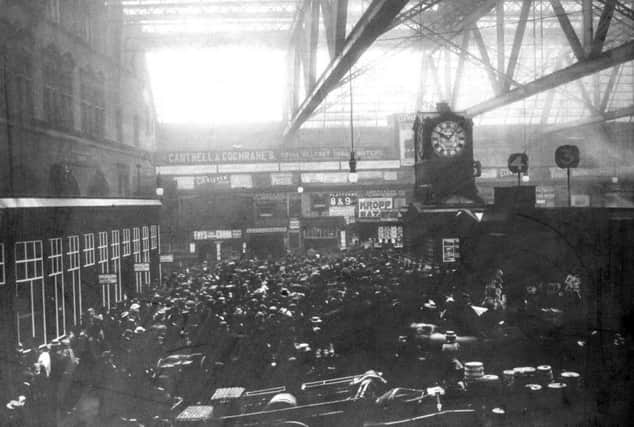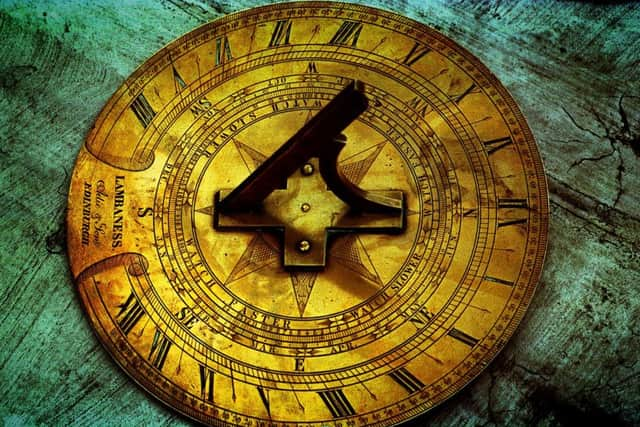When Scotland and England had different time zones


On January 30 1848, Scots were waking up to GMT for the first time, their clocks and fob watches moved forward the night before, around 11pm local time.
The change had broadly taken place south of the Border from September the previous year with those in Edinburgh living 12 and-a-half minutes behind the new standard time as a result.


Advertisement
Hide AdAdvertisement
Hide AdThe discrepancy grew the further west you moved, with the time in Glasgow some 17 minutes behind GMT. In Ayr the time difference was 18-and-a-half minutes with it rising to 19 minutes in the harbour town of Greenock.
All these lapses were ironed out over night on January 29 1848, but the move wasn’t without controversy as some resisted the move away from local time.
Sometimes referred to as natural time, it had long been determined by sun dials and observatories and later by charts and tables which outlined the differences between GMT and local time at various locations across the country.


But the need for a standard time measurement was broadly agreed upon given the surge in the number of rail services and passengers with different local times causing confusion, missed trains and even accidents as trains battled for clearance on single tracks.
Advertisement
Hide AdAdvertisement
Hide AdAn editorial in The Scotsman on Saturday, January 28, 1848, said: “It is a mistake to think that in the country generally the change will be felt as a grievance in any degree.
“Probably nine-tenths of those who have clocks and watches believe that their local time is the same with Greenwich time, and will be greatly surprise to learn that the two are not identical.
“Even if they wished to keep local time, they want the means.
“Observatories are only found in two or three of our Scottish towns.
Advertisement
Hide AdAdvertisement
Hide Ad“As for the sundials in use, their number is small, most of them, too, are made by incompetent persons and even when correctly constructed, the task of putting them up and adjusting them to the meridian is generally left to an ignorant mason, who perhaps takes the mid-day hour from the watch in his fob.”
The editorial added: “For the sake of convenience, we sacrifice a few minutes and keep this artificial time in preference to sundial time, which some call natural time, and if the same convenience counsels us to sacrifice a few minutes in order to keep one uniform time over the whole country, why should it not be done!”
Mariners had long observed Greenwich Mean Time and kept at least one chronometer set to calculate their longitude from the Greenwich meridian, which was considered to have a longitude of zero degrees.
The move to enforce it as the common time measurement was made by the Railway Clearing House in September 1847.
Advertisement
Hide AdAdvertisement
Hide AdSome rail companies had printed GMT timetables much sooner. The Great Western Railway deployed the standard time in 1840 given that passengers on its service between London to Bristol, then the biggest trading port with the United States, faced a time difference of 22 minutes between its departure and arrival point.
Rory McEvoy, curator of horology at the Royal Observatory Greenwich, said travel watches of the day had two sets of hands, one gold and one blue steel, to help measure changes in local time during a journey.
Maps also depicted towns with had adopted GMT and those which had not, he added.
He added: There was information out there for determine the local time difference so they would know the offset to apply to GMT before the telegraphic distribution of time.”
Advertisement
Hide AdAdvertisement
Hide AdMr McEvoy said different towns and cities in Scotland would have had their own time differences before adoption of GMT.
Old local time measurements show that Edinburgh was four-and-a-half minutes ahead of that in Glasgow, for example.
Mr McEvoy added: “I think it is fair to say there was no real concept of these differences at the time. It was when communication began to expand quite rapidly that it became f an issue. I think generally, you would be quite happy that the time of day was your local time.”
